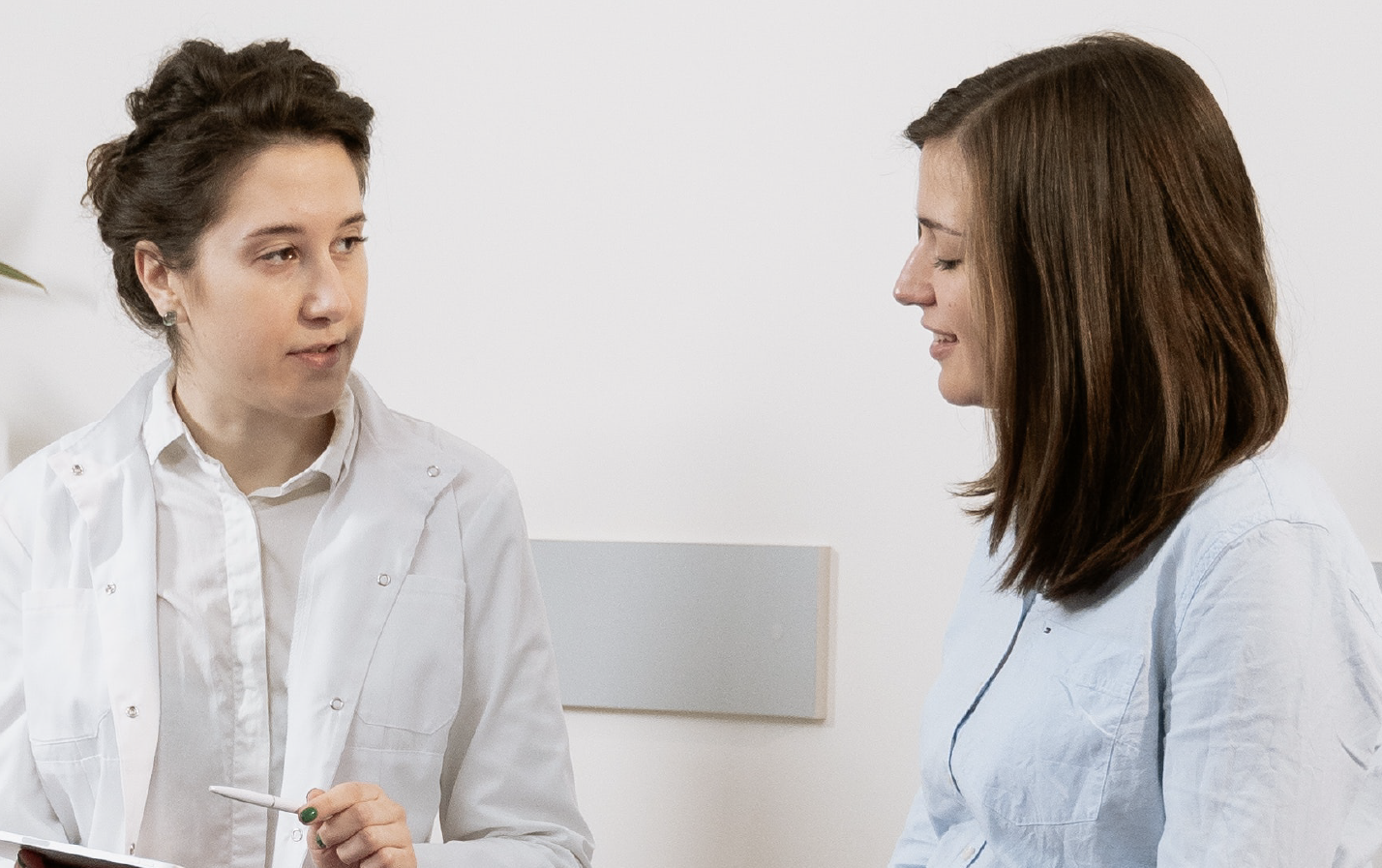
Fertility Treatments | IVF Explained
The IVF Process: Step-by-Step Fertility Treatment & Embryo Transfer Timeline
Are you curious about the IVF process timeline? In this step-by-step guide, we'll walk you through the stages of In Vitro Fertilization (IVF) – a popular assisted reproductive technology. Understanding the IVF process can be crucial for individuals or couples who are struggling with fertility challenges and seeking to conceive a child. Let's explore the IVF journey from start to finish.
Step 1: Initial Consultation and Fertility Assessment – Three to Four Weeks
The IVF process begins with an initial consultation with a fertility specialist or reproductive endocrinologist. During this consultation, you doctor will review the medical history of the individuals or couple, conduct necessary tests, and assess the potential causes of infertility. At this appointment, you and your physician will also discuss your individualized treatment plan and you should walk away with a clear understanding around your likelihood of success with IVF.
Wait times for initial consults vary from clinic to clinic, but your first appointment with your fertility specialist can be considered the first step in the IVF process. Your overall IVF timeline will be determined by either the female partner’s menstrual cycle or the clinic’s operating protocols. At Spring Fertility, we believe in mimicking a woman’s physiology as closely as possible, and so we do not believe in ‘batching’ cycles – a term that refers to clinics starting all patients’ ovarian stimulation cycles at the same time so that they can more effectively plan for scheduling egg retrieval procedures.
Step 2: Ovarian Stimulation for Egg Production – 10 – 14 Days
The next step in the IVF process is ovarian stimulation, and we generally counsel patients that the timeline for this phase of treatment is about two weeks.
The female partner will be given hormonal medications (usually injections) to stimulate the ovaries to produce multiple eggs. This is because in a natural cycle, only one egg is typically released each month, but in IVF, having multiple eggs increases the chances of successful fertilization.
Throughout the ovarian stimulation phase, the woman's response to the medications will be closely monitored through blood tests and ultrasounds. This helps the doctor determine the appropriate timing for egg retrieval.
Step 3: Egg Retrieval Procedure – 20 minutes
Once the ovarian follicles containing the eggs have matured to the appropriate size, your physician will prescribe what’s called a trigger shot to induce ovulation. 36 hours later, an egg retrieval is performed.
You’ll check in about an hour before the procedure to prep and change into a warm robe before meeting our anesthesiologist and embryologist who will be caring for you and your eggs. You’ll fall asleep under anesthesia, while our specialists aspirate your eggs using a very fine needle.
About 20 minutes later, you’ll awaken in our recovery area where our team will look after you before you are ready to go home (usually about 45 minutes). Most women take the rest of the day off and are ready to go back to work the following day.
Step 4: Sperm Collection and Fertilization – Same Day as Egg Retrieval
On the day of egg retrieval, the male partner or a sperm donor will provide a semen sample. In some cases, sperm can also be retrieved surgically if the male partner has fertility issues.
Prior to IVF or ICSI, the sperm is carefully processed in our Andrology lab by our expert embryologists. In a process that takes about 1-2 hours, the healthiest and most motile sperm are separated and washed to remove bacteria and other unwanted components. The sperm cells are activated and a particular density – or concentration – of the best sperm is achieved to optimize fertilization.
Once we have eggs and sperm, it’s time for them to meet (insemination or fertilization). This can be done in one of two ways: conventional insemination (IVF) or through ICSI. Both procedures are performed outside the body by our team of expert embryologists.
In conventional insemination, sperm are placed near the eggs and allowed to fertilize naturally, or through intracytoplasmic sperm injection (ICSI), where a single sperm is directly injected into an egg to achieve fertilization.
Step 5: Embryo Culture and Development – 5 to 6 Days
The morning after insemination, an embryologist will check to see if the eggs fertilized. Normally fertilized eggs have two “pronuclei,” DNA from the sperm and from the egg. Your fertilized egg is officially called an embryo.
Today, we increasingly care for embryos in the lab for 5–6 days until they reach the blastocyst stage. This gives us time to determine which are healthiest to be transferred back to the uterus. Patients with fewer good quality embryos may choose to transfer the embryo back into the uterus 2 or 3 days after fertilization since we are not choosing between them.
Some patients experience this step of the IVF process timeline as a relief, while others feel like it’s very challenging, because there is nothing for the patient to do but wait to hear news from the lab.
Step 6: Genetic Testing – 4 to 6 weeks
IVF patients have the opportunity to test their embryos before transferring them. While this process does add time to the overall IVF timeline, it allows us to maximize the likelihood of success by carefully sampling a few cells from each embryo and testing them to see if they are chromosomally normal (PGT-A). We can also test embryos to diagnose a disease that one or both parents are known to carry (PGT-M).
While those cells are being analyzed, your embryos are safely cryopreserved in the embryology lab. Cryopreservation of embryos has been safely performed for over 30 years, and today over 99% of embryos survive with no negative effects on IVF outcomes.
Step 7: Embryo Transfer
Once genetic testing results are received, your physician will counsel you about your options. If you have enough genetically normal (euploid) embryos to meet your family planning goals, it will be time to prepare for an embryo transfer. If not, your provider will likely talk to you about completing another ovarian stimulation cycle.
The ‘embryo transfer’ process is relatively simple. The procedure itself only takes about five minutes. An embryologist prepares your embryo by placing it in a small tube called a catheter. Your fertility specialist will then place the catheter through your cervix and into your uterus.
And that’s it!
You’ll be awake, there’s no anesthetic, and you can get up straight away and go about your day.
Step 8: Pregnancy Test & Beyond (2 weeks)
Known as “the two week wait” and often the hardest part of the entire IVF transfer process, ~11-13 days after the transfer, you’ll come back into our clinic to find out if your embryo implanted successfully. You’ll have a blood test to measure your levels of the hormone hCG (human chorionic gonadotropin). hCG in your bloodstream usually indicates a positive pregnancy test.
It's important to note that not every IVF cycle results in pregnancy, and sometimes multiple cycles may be needed to achieve a successful pregnancy. The entire IVF process can take between 6-8 weeks (without genetic testing), however it’s also important to understand that every patient’s IVF timeline will look different. After your initial consult, you’ll have a better understanding of what your individualized IVF process step by step will entail.
